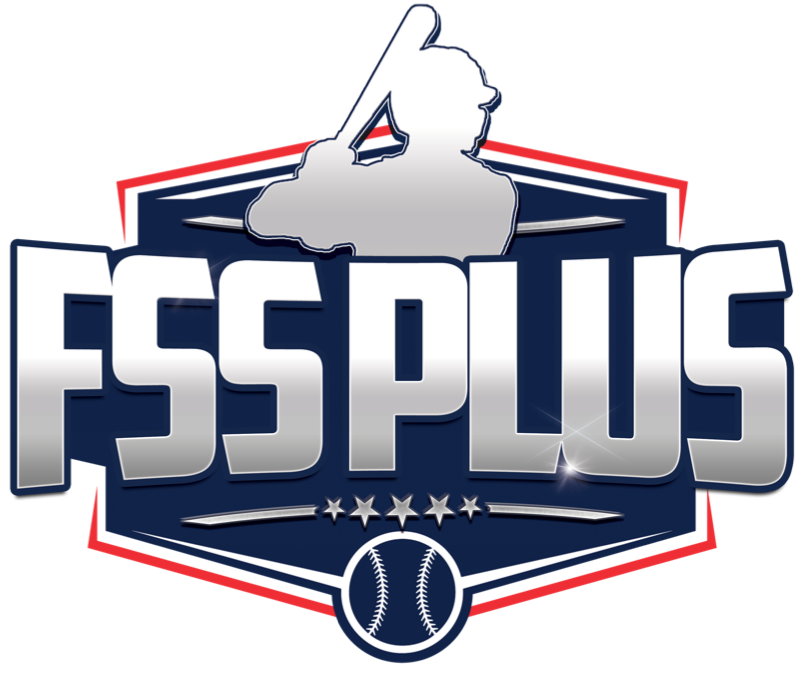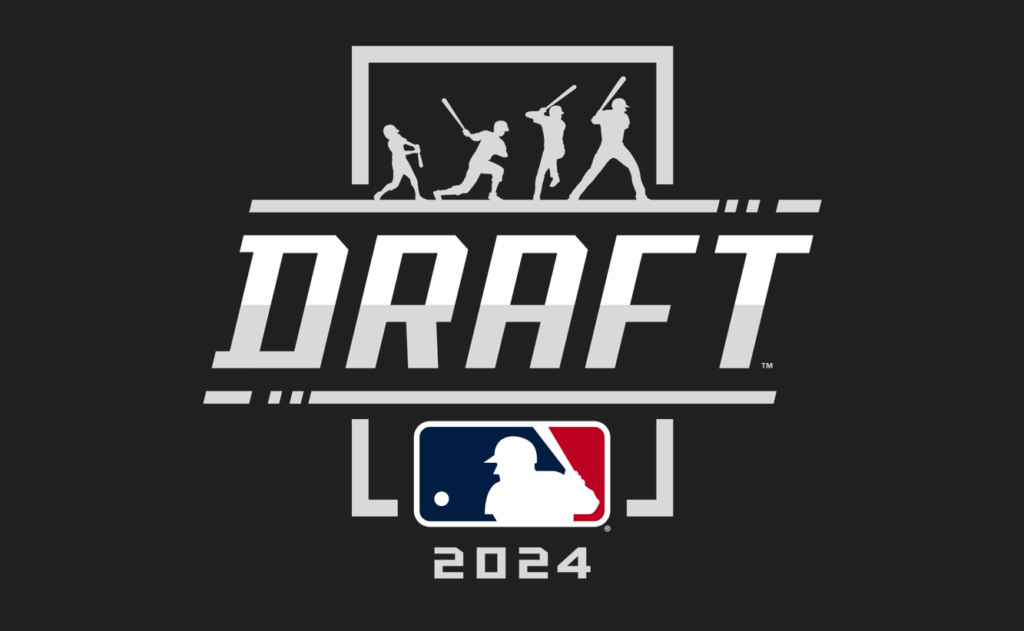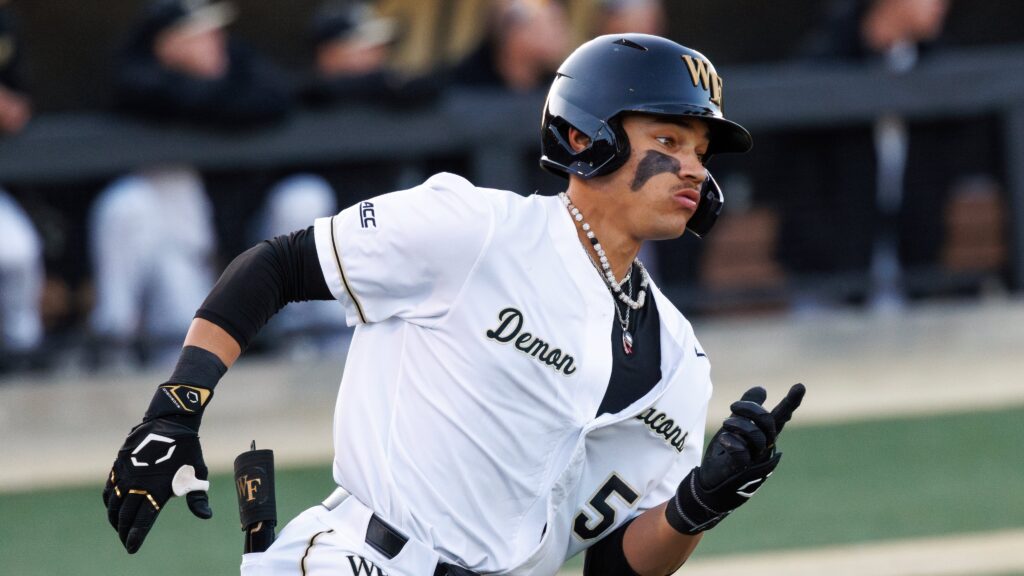The ACC had 10 players go on Day 1 last year, most notably Rhett Lowder, Kyle Teel, Yohandy Morales, and Sean Sullivan. The remaining of the top 5 rounds saw 13 additional players selected from the conference, led by breakouts C.J. Kayfus and Alejandro Rosario.
Just like prior years, this projects as a strong year for the ACC, with multiple top players while scattering depth in later rounds.
RANKINGS: FULL DRAFT BOARD
1. Chase Burns, RHP — Wake Forest

| G | IP | ERA | SO | BB |
|---|---|---|---|---|
| 16 | 100 | 2.70 | 191 | 30 |
The top spot in the ACC is competitive, but Burns gets the nod here.
Burns is the emotional competitor you seek in an ace, a prototypical right-hander throwing absolute gas with a fiery disposition on the mound. The fastball’s up to 101mph, sitting upper-90s, a dynamic pitch, paired with a filthy, 70-grade slider with fantastic shape. It’s the best one-two punch in the Draft and the bread and butter for the Wake Forest star. Burns will throw a changeup and curveball, and both are average offerings.
There’s effort in the delivery, but Burns has thrown enough strikes to let the stuff play. We’re talking about a guy who has a chance to be the ace on a big-league team by the end of 2026, and that might be selling him short.
2. Nick Kurtz, 1B — Wake Forest
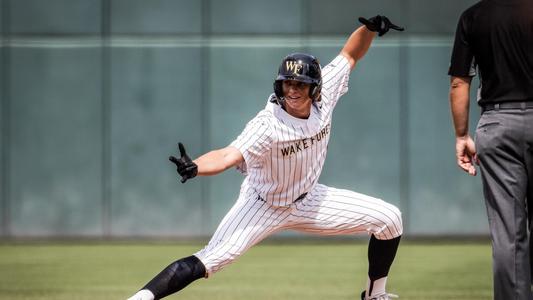
| AVG | OBP | SLG | HR | BB | SO |
|---|---|---|---|---|---|
| .306 | .531 | .763 | 22 | 78 | 42 |
Kurtz is a monstrous first baseman with a beautifully violent left-handed swing built for damage. Early in the year, Kurtz struggled a bit but finished the final month and a half one of the hottest hitters in college baseball.
Kurtz has a shot at 40 homers. It’s a patient approach with a strong feel for the zone, and the 70 raw power is to all fields and comes with the potential to hit for average.
While you’re buying the bat here, Kurtz is also an above-average defender at first. He navigates the bag well and makes tough picks. All-in-all, Kurtz projects as a prototype, above-average big league first baseman who sticks around for a while.
3. Cam Smith, 3B — Florida State

| AVG | OBP | SLG | HR | BB | SO |
|---|---|---|---|---|---|
| .387 | .488 | .654 | 16 | 44 | 48 |
A sophomore-eligible, Smith struggled in his freshman campaign but showed steady signs of improvement on the Cape last summer. This spring, the third baseman looked like a whole new ballplayer, cutting down his aggressive tendencies while also making far more contact.
He has plus bat speed and raw power that provides big-league power projection. There are some questions about what the game power ultimately looks like, but his overall offensive package should play.
Smith has a plus arm, and improved quite a bit defensively, giving him a real chance to stick long-term.
4. Seaver King, UTIL — Wake Forest
| AVG | OBP | SLG | HR | BB | SO |
|---|---|---|---|---|---|
| .308 | .377 | .577 | 16 | 25 | 34 |
King is a dynamic player, a 70 runner who plays hard. A natural shortstop, King played third base, center field, and shortstop for the Deacons this year. He’s a 55-grade third baseman, average shortstop, and an average center fielder, maybe better, given more reps.
King’s electric tools also carry over offensively, with plus power thanks to some of the best bat speed in the class, and an above-average feel to hit. The single flaw King has is a hyper-aggressive approach that leads to a bunch of chase. It’s notable, but the tools and athleticism point to a potential impact player or star.
5. James Tibbs, OF — Florida State

| AVG | OBP | SLG | HR | BB | SO |
|---|---|---|---|---|---|
| .362 | .488 | .773 | 25 | 53 | 30 |
Tibbs is a below-average athlete likely to spend his career in a corner outfield spot, and perhaps eventually first base. Like Kurtz, you’re buying the bat here, but also like Kurtz, it’s a good one.
Tibbs showcased an above-average feel to hit with a plus approach and plus power this year. His swing is loose and adjustable, and there’s tons of polish in the offensive profile. The floor is extraordinarily high as a seasoned college and Cape performer with little to no flaws, the floor is high, risk low, and there’s some ceiling here because of the hit and power combo.
6. Jonathan Santucci — Duke, LHP
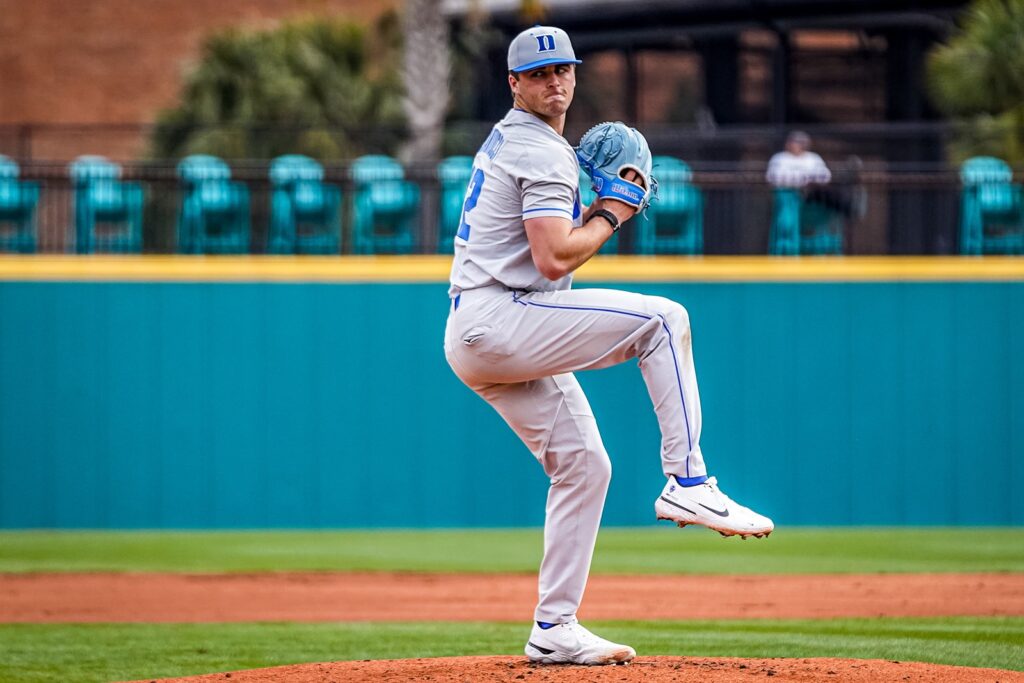
| G | IP | ERA | SO | BB |
|---|---|---|---|---|
| 13 | 58 | 3.41 | 90 | 36 |
Santucci is a lefty with tantalizing stuff, but isn’t quite sure where the ball’s going, yet. His stuff supports frontline starter status, his control and command aren’t there yet.
The fastball gets up to 97 mph, with hopping life over the barrel. The slider has late horizontal bite in the low 80s. The infrequently used changeup has massive fading life. All three are plus offerings.
Santucci does a good job avoiding the barrel and fits into the bucket of starters whose stuff plays in the bullpen. But a mid-rotation or better profile is enticing, and those don’t grow on trees, particularly from the left side.
7. Vance Honeycutt, CF — North Carolina

| AVG | OBP | SLG | HR | BB | SO |
|---|---|---|---|---|---|
| .318 | .410 | .714 | 28 | 36 | 83 |
Honeycutt is one of the most famous players in the Draft, an electric athlete with 70 speed and center field defense. The tools are loud, no doubt.
Honeycutt has a patient approach, but his feel for the zone is imperfect, generating suboptimal swing-and-miss. It’s plus power with the ability to play to all fields when he’s going right, from the right-center gap to the left-field foul pole. You can see 25-plus home runs here.
Honeycutt can impact the game in a lot of ways with his loud, raw tools.
8. Griff O’Ferrall, SS — Virginia
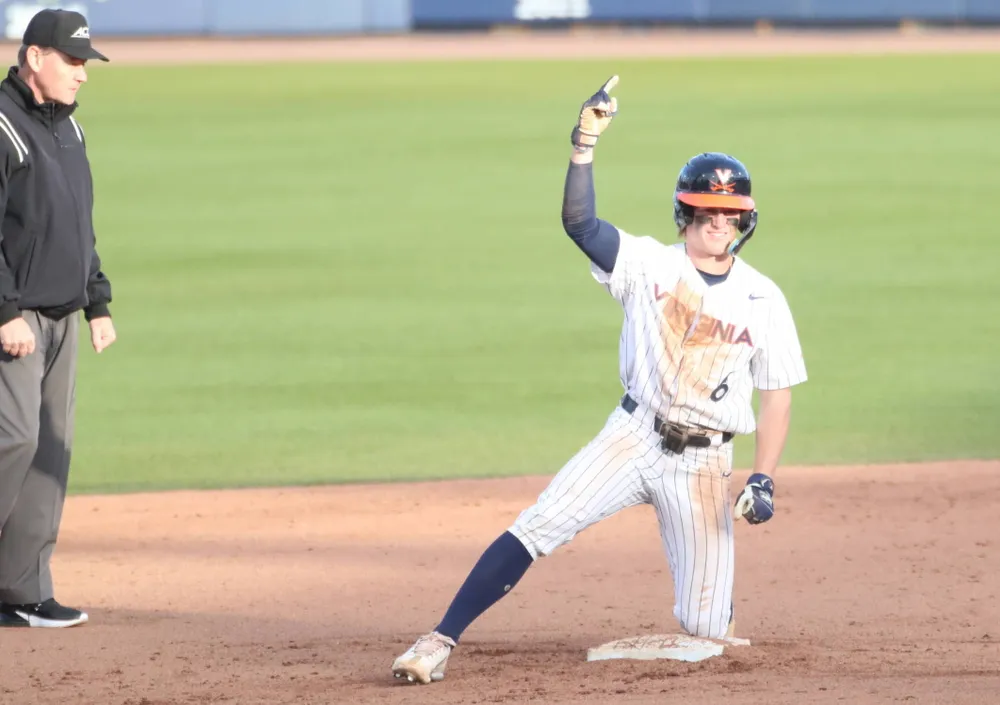
| AVG | OBP | SLG | HR | BB | SO |
|---|---|---|---|---|---|
| .324 | .367 | .454 | 5 | 22 | 24 |
O’Ferrall possesses a very robust floor with borderline 70-grade, innate feel for contact. He’s tried getting to his pull side more in 2024, but power doesn’t project as any notable part of his game, and he’d be better off just slapping the ball around and posting high averages and on-base marks.
He likely sticks as an above-average defender at shortstop with a quick first step and above-average range. The fact that there’s a scarcity of shortstops who stick in this class plays in O’Ferrall’s favor.
O’Ferrall has 30 power which greatly limits his upside, but a shortstop that can hit is an easy thing to like in this class. He’s a big leaguer.
9. Jacob Cozart, C — NC State

| AVG | OBP | SLG | HR | BB | SO |
|---|---|---|---|---|---|
| .305 | .437 | .601 | 19 | 52 | 48 |
Cozart is the most polished defensive catcher at the top of this Draft. A plus defender, Cozart’s calling card is his ability to steal strikes, but he’s also drawn rave reviews as a leader and game-caller.
He’s put up numbers consistently against tough ACC competition the last two years, with above-average raw power and solid contact rates.
Even if Cozart’s floor is a strong-side platoon, plus defensive, slugging catcher, there’s plenty of value in that, and there’s definite starting and impact upside with some development at the plate.
10. Eli Serrano III, OF — NC State
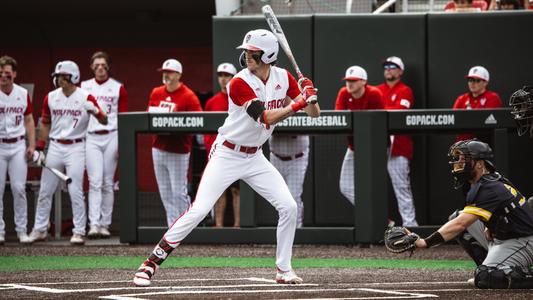
| AVG | OBP | SLG | HR | BB | SO |
|---|---|---|---|---|---|
| .285 | .380 | .431 | 9 | 32 | 37 |
Serrano will be a really interesting follow both during and after the Draft. A surprisingly lean and athlete 6-foot-5 outfielder, he does a lot of things well under the hood that are rather encouraging.
A lefty with a strong approach coupled with above-average contact, Serrano could benefit from adding strength, possibly unlocking more consistent power.
Right now he can play an acceptable center field, but he’s most likely headed for right field. There’s a ton of Max Kepler here.
11. Payton Green, 2B/3B — Georgia Tech
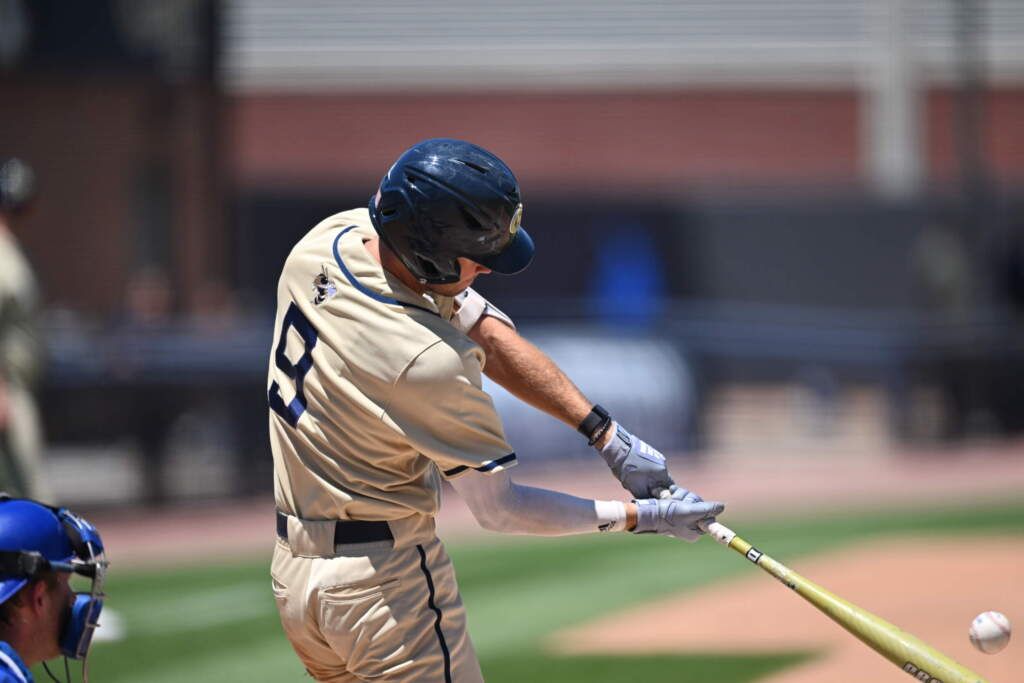
| Games | AVG | OBP | SLG | HR | BB | SO |
|---|---|---|---|---|---|---|
| Before March 17 (18 G) | .400 | .494 | .815 | 6 | 13 | 7 |
| After March 17 (36 G) | .265 | .357 | .470 | 6 | 15 | 28 |
Green had a torrid start to the year but cooled off as the season progressed. He’s capable at shortstop but is more likely to play all over the field — perhaps mostly at second base.
Green has above-average power and some feel for contact but is limited by an impatient approach. You’re hoping for a slugging second or third baseman who hits you 25 homers, even if he strikes out some and hits .250.
12. Michael Massey, RHP — Wake Forest
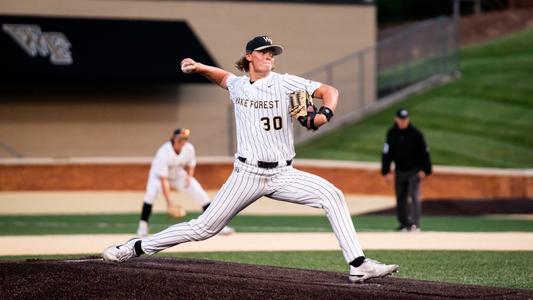
| G | IP | ERA | SO | BB |
|---|---|---|---|---|
| 13 | 34 | 4.76 | 51 | 24 |
Massey is a large right-hander with a metrically appealing mix. In his first year in the rotation, Massey showed a Lucas Giolito-esque short-arm circle.
His most projectable pitch is his fastball, a mid-90s heater with tons of riding life through the zone. He’ll mix in a low-80s gyro slider. There’s an occasional curveball, too.
Massey’s mostly maxed out physically, and the strike-throwing needs work. The stuff plays in the bullpen, and there’s mid-rotation if he can’t find the command to start.
13. Carson DeMartini, 3B — Virginia Tech
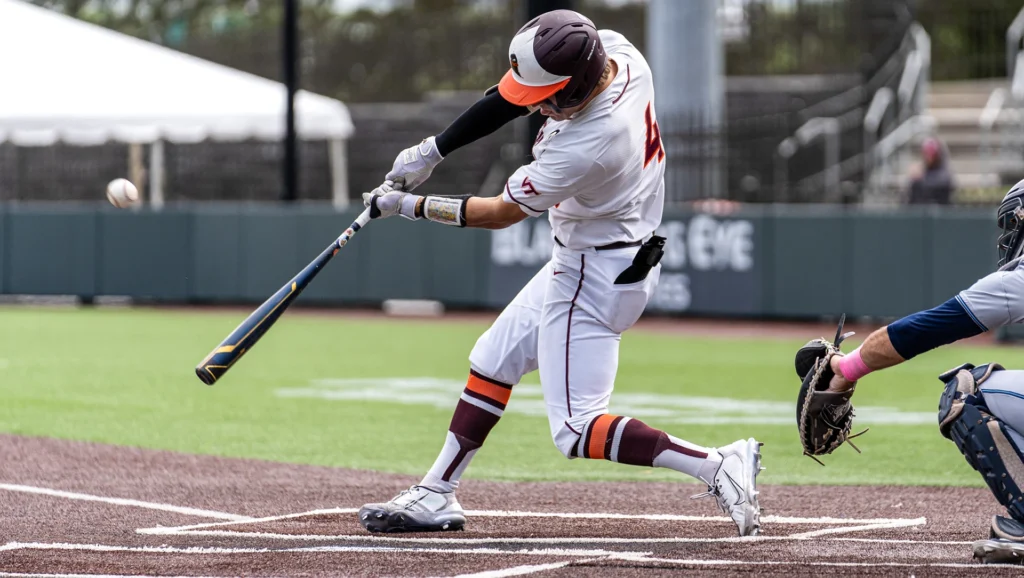
| AVG | OBP | SLG | HR | BB | SO |
|---|---|---|---|---|---|
| .269 | .400 | .672 | 21 | 43 | 71 |
DeMartini changed his profile this year. Previously a polished hitter, DeMartini went for power this year.
He has above-average raw power and good swing decisions, but there is some swing-and-miss. A three-true-outcome type that sticks at second or third base brings its own risk, but his bat speed and trending feel give him a chance to continue the profile-altering development in pro ball.
14. Will Taylor, OF — Clemson
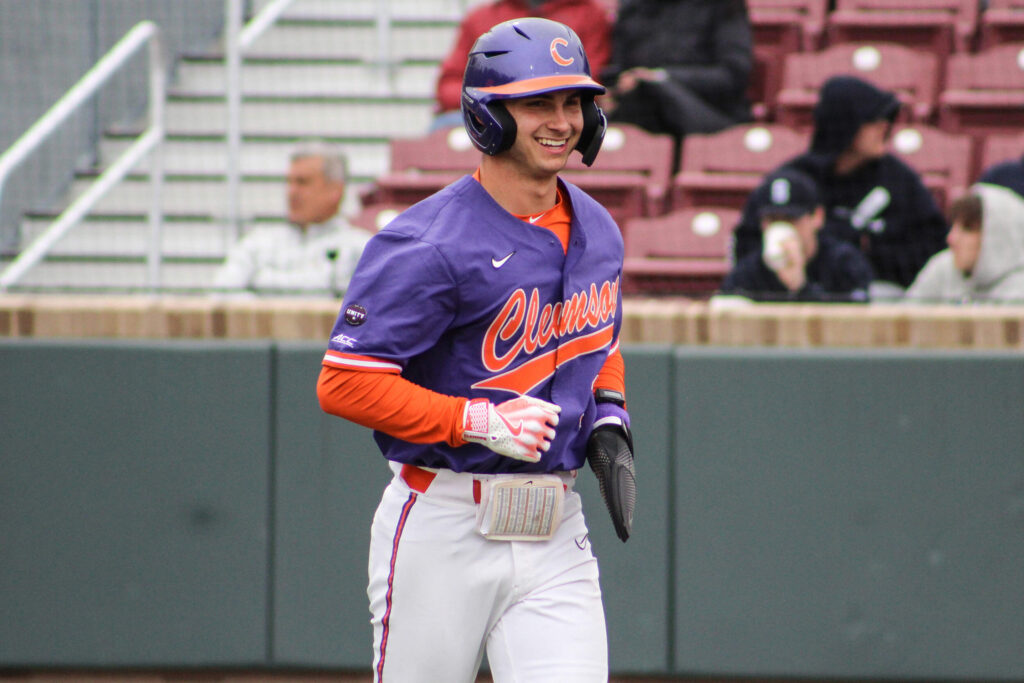
| AVG | OBP | SLG | HR | BB | SO |
|---|---|---|---|---|---|
| .230 | .465 | .480 | 7 | 33 | 26 |
Taylor is a former two-sport star and blue-chip prospect who has struggled to put it all together. The athleticism is there, but he tore his ACL early in his college career and isn’t the premium runner he once was. He hasn’t had a chance to play center field in lieu of star 2025-eligible Cam Cannrella, but that’s in the cards for him at the next level.
Taylor has posted extreme reverse splits for two years straight, which is puzzling, but there are tools to buy offensively. It’s a patient approach with average power, and it’s reasonable to believe there’s more in the tank with consistent time on the field.
15. Ethan Anderson, C/1B — Virginia
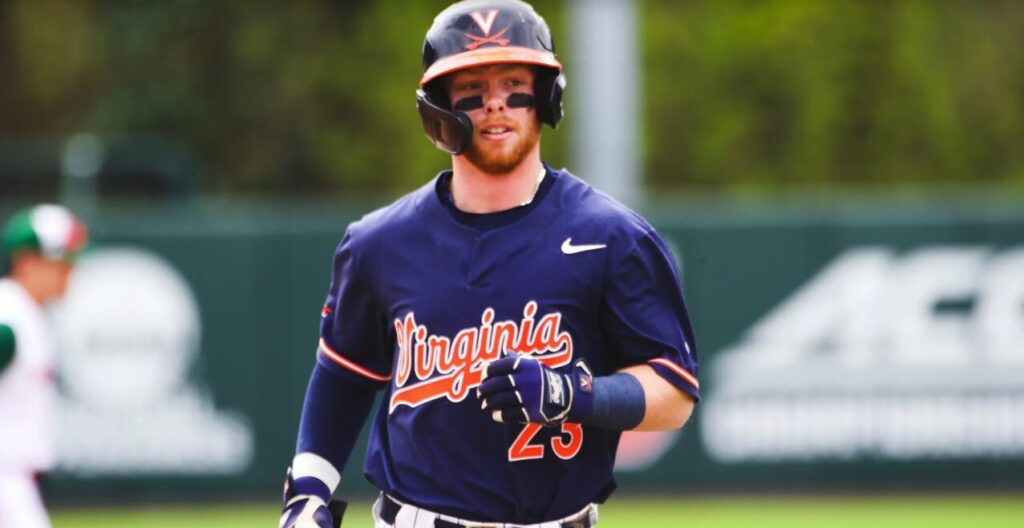
| AVG | OBP | SLG | HR | BB | SO |
|---|---|---|---|---|---|
| .331 | .435 | .508 | 8 | 40 | 32 |
Anderson’s a contact-oriented, switch-hitting catcher/first baseman with projectable power and the ability to battle counts.
This year was more of a struggle for him offensively, but that may be a timing issue. Anderson could be a simple tweak or adjustment away from returning to form after dropping 44 points in average and over 30 points in slug from his banner sophomore season.
Defensively, Anderson is surprisingly athletic and can play an above-average first base, but should get plenty of chances to catch.
16. Josh Hartle, LHP — Wake Forest
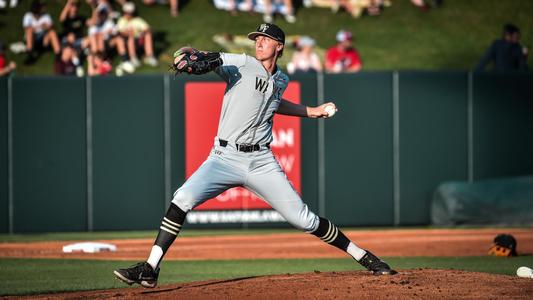
| G | IP | ERA | SO | BB |
|---|---|---|---|---|
| 15 | 74.2 | 5.79 | 81 | 25 |
Hartle’s a kitchen sink lefty whose game is reliant on pitchability and command. He throws a fastball, cutter, curveball, changeup, and slider, and mixes the arsenal well.
The fastball is up to 94 mph with some running and sinking life, and the cutter is his most used secondary, a pitch he throws with plus command in on right-handed bats.
Hartle had a monster sophomore season he’s hoping clubs remember come Draft day.
17. Rafe Schlesinger, LHP — Miami
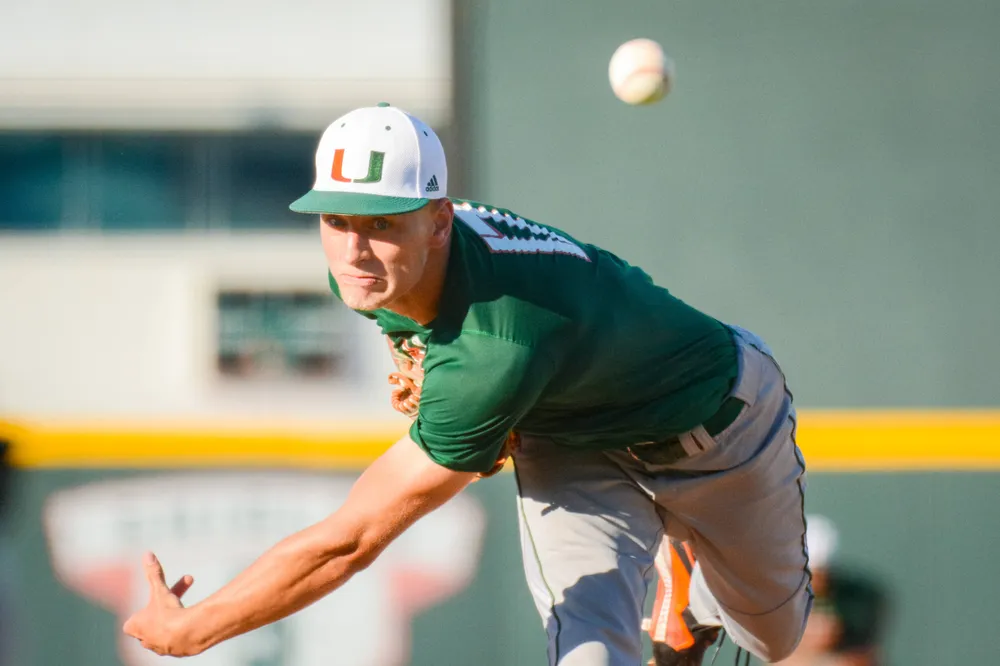
| G | IP | ERA | SO | BB |
|---|---|---|---|---|
| 15 | 78.2 | 5.83 | 73 | 25 |
Schlesinger is a lefty slinging from a sidearm slot who’s primarily a two-pitch guy. The fastball gets up to 97 mph and the slider has a lot of horizontal bite due to the slot and angle. There is a changeup here, but the feel isn’t there. He primarily works east-west, though he may be able to elevate his fastball more often to get some swing-and-miss value.
Schlesinger checks a lot of boxes, as he’s been a strike-thrower with solid stuff and projection remaining. He may not have a monster ceiling, but there are plenty of interesting traits and some low-hanging fruit with which to work.
18. Casey Saucke, RF — Virgina
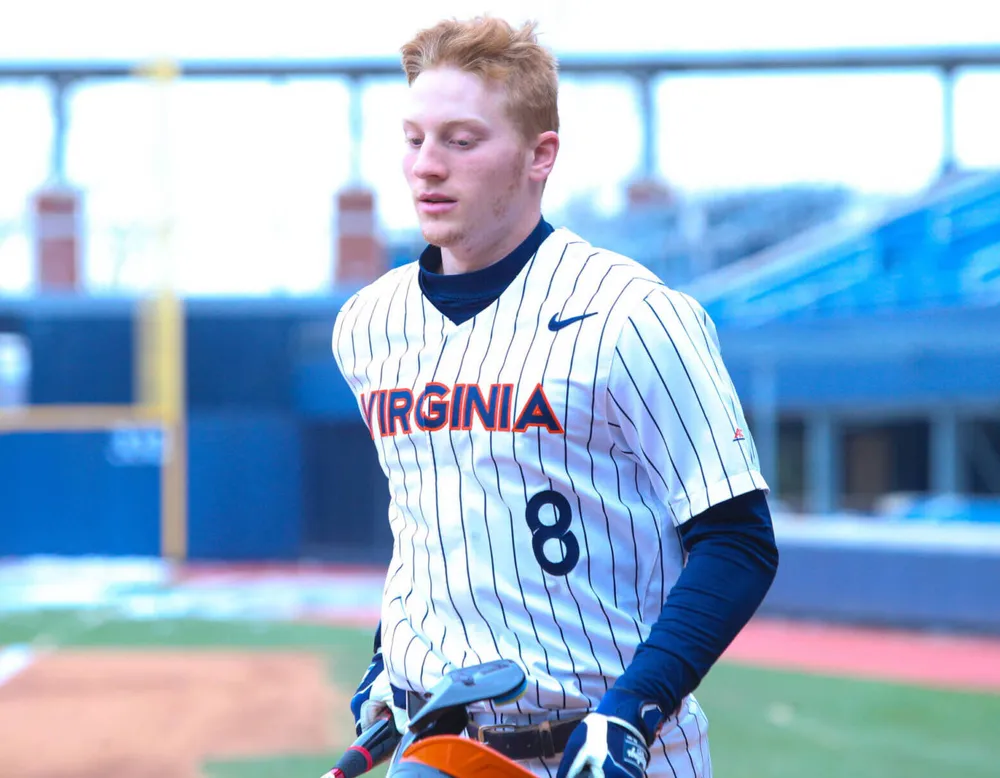
| AVG | OBP | SLG | HR | BB | SO |
|---|---|---|---|---|---|
| .340 | .400 | .570 | 13 | 25 | 53 |
Saucke has been a well-known prospect since he was a freshman. He had trouble tapping into his raw power his first two seasons but doubled his previous career high in homers in 2024, and did so without sacrificing contact.
Alongside a cannon of an arm and strong right-field defense, there’s some Hunter Renfroe here.
19. Harrison Didawick, OF — Virginia
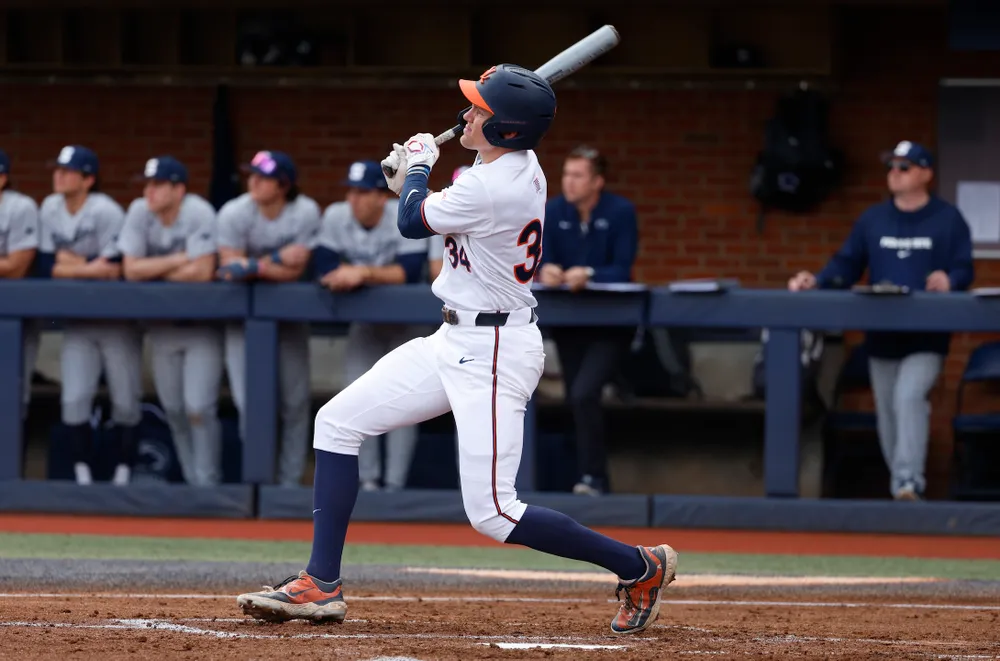
| AVG | OBP | SLG | HR | BB | SO |
|---|---|---|---|---|---|
| .292 | .414 | .642 | 23 | 41 | 71 |
Didawick is a dynamic box of tools that clearly has upside, but there are boom-or-bust characteristics. Didawick has long levers with a lanky, athletic frame. He has a shot in center field, and at the plate, he showed plus power with natural leverage.
The hit tool is the concern here, as Didawick has a long swing with tons of whiff risk. I’ve heard someone call him Spencer Jones, which may not be too far off in concept.
Image of Chase Burns courtesy of Wake Forest Athletics
Image of Nick Kurtz courtesy of Wake Forest Athletics
Image of Cam Smith courtesy of Seminoles
Image of James Tibbs courtesy of Seminoles
Image of Seaver King courtesy of Wake Forest Athletics
Image of Jonathan Santucci courtesy of Duke Athletics
Image of Vance Honeycutt courtesy of University of North Carolina
Image of Griff O’Ferrall courtesy of Virginia Sports
Image of Jacob Cozart courtesy of NC State Athletics
Image of Eli Serrano courtesy of NC State Athletics
Image of Payton Green courtesy of Georgia Tech Athletics
Image of Michael Massey courtesy of Wake Forest Athletics
Image of Carson DeMartini courtesy of Virginia Tech Athletics
Image of Will Taylor courtesy of Clemson Tigers
Image of Ethan Anderson courtesy of Virginia Sports
Image of Josh Hartle courtesy of Wake Forest Athletics
Image of Rafe Schlesinger courtesy of University of Miami Athletics
Image of Casey Saucke courtesy of Virginia Sports
Image of Harrison Didawick courtesy of Virginia Sports
- MLB DRAFT: Bazzana, Smith lead debuts for top picks - September 4, 2024
- Prospect notes on Rockies, D-Backs, Mariners, led by Troy, Arroyo, Karros - August 2, 2024
- MLB DRAFT: Boctor’s 5 best classes - July 17, 2024
